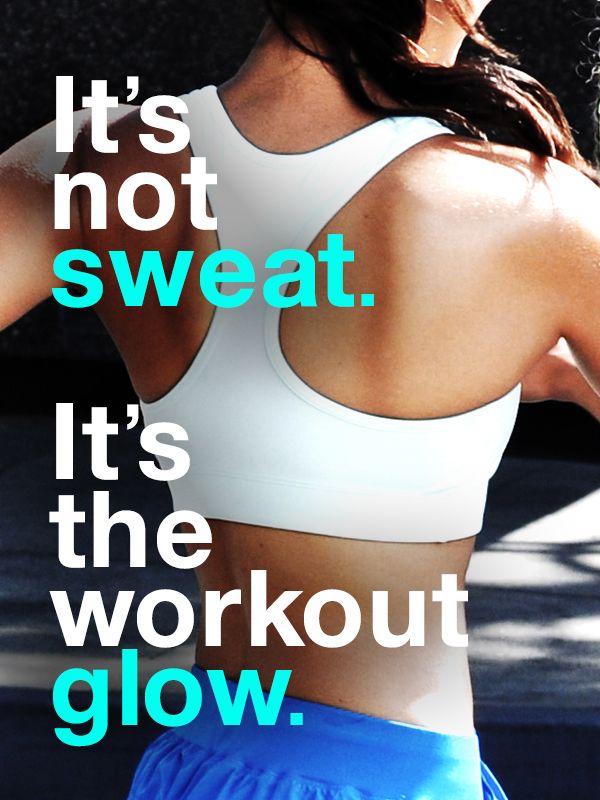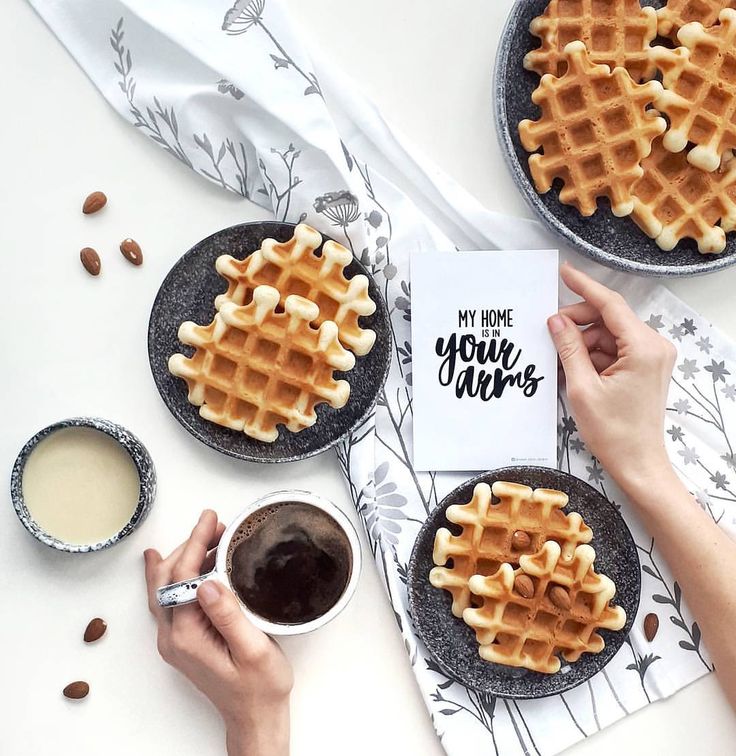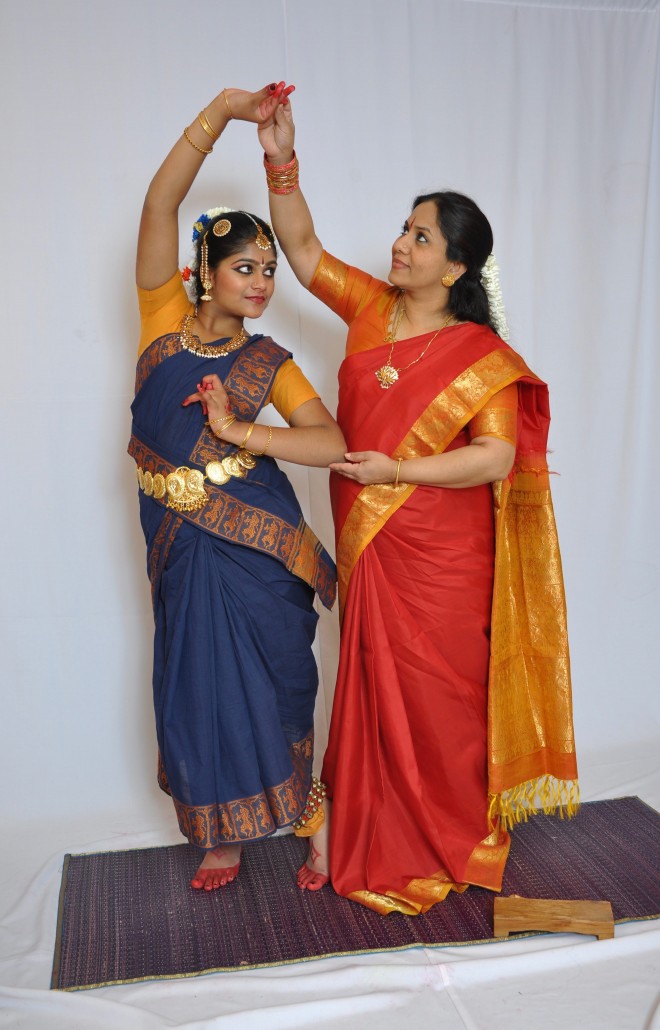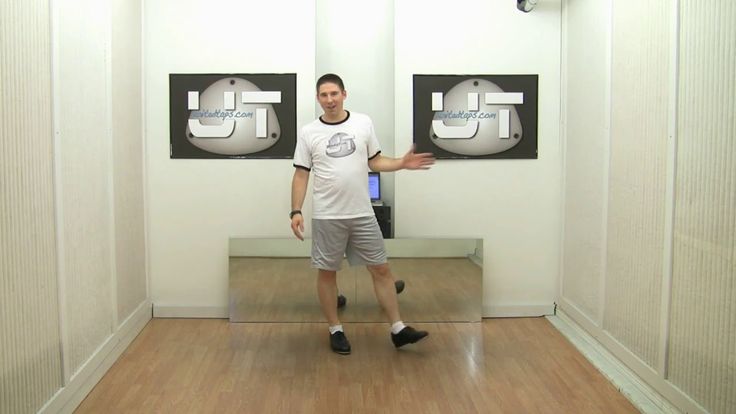How to not sweat while dancing
Help! I Sweat A LOT In Dance Class!
by Nichelle Suzanne (owner/editor)
A reader writes:Dear reader, I know this can be an embarrassing situation.We all know dancers work hard and sweat. Thing is, I sweat excessively! When I dance, it starts from the very first minutes in class and then gets worse and worse!
That brings many undesired results: a) I smell bad, b) I’m sticky and watery so I guess it’s not appealing for my dance partner and I get embarrassed when he touches me, c) my leotard or unitard gets sweaty marks under the armpits, under the breasts, belly, back, waist, groin, buttocks (that means everywhere).
It’s so embarrassing! Most of my classmates do not sweat as I do. If you have any advice, ideas, solutions, article or anything else on this, I would really appreciate it!
First, understand sweating during physical activity is normal and healthy.
Heavy sweating (unless it’s accompanied by pain, trouble breathing, or underlying health problems) may actually be a sign that you are more physically fit than your non-sweating classmates. At the very least it shows you have an efficient cooling system!
Do put your mind at ease and talk with your doctor to rule out any conditions that may be causing you to sweat excessively.
Second, don’t be unnecessarily self-conscious and worried that others see you in a negative light because you sweat heavily.
I would bet no one is as put off by it as you feel they might be. You are dancing with enough energy and intensity to raise your core body temperature, and it shows! Most teachers, choreographers, and performers appreciate this in their fellow dancers.
If someone is put off by it, well, it’s really his/her problem, not yours. (I know this may feel hard to accept. But it’s true and that person really just needs to get over it.)
Don’t be afraid to use humor and make light of the issue. Crawling into a corner, apologizing as excessively as you sweat, or letting someone’s rude comment get to you creates tension around the issue. Tension turns small issues into big ones and others may try to break this tension with hurtful jokes or rude comments. There’s something to be said for disarming any tension by being the first to acknowledge or crack a joke about your excessive sweating. It really can put everyone at ease to know you know they know, you know?
Crawling into a corner, apologizing as excessively as you sweat, or letting someone’s rude comment get to you creates tension around the issue. Tension turns small issues into big ones and others may try to break this tension with hurtful jokes or rude comments. There’s something to be said for disarming any tension by being the first to acknowledge or crack a joke about your excessive sweating. It really can put everyone at ease to know you know they know, you know?
There are some steps you can take to cut down on wet marks, dampness, and maybe smell (which may not be as bad as you imagine). I would suggest you…
- Spend a little extra on leotards and athletic wear made with fabrics designed to whisk away sweat or even dampness. Most companies have a line of cooling dancewear. I can’t vouch for which ones work best but other readers may have suggestions.
- Stay hydrated. Drink water before and during class (they say one half to one cup for every 15-20 minutes of exercise)
- Bring a small towel with you to class and maybe some powder if you are partnering and your arms or hands are slick.

Additional tips for coping with excessive sweating (via WebMD):
- Put on a higher-strength deodorant at night and tote it in your dance bag for reapplication during the day
- Hold the spicy jalapeno, onions, or garlic which can make sweat smell worse
- Choose fabrics that are lightweight, loose-weave, or cotton when possible
- Spritz yourself with water. It may seem counterproductive but the spritz can cool you and make sweating less necessary.
- Wear darker colors rather than light ones if possible
- Wear patterned dance tops (this may not work for all classes/dance forms) as opposed to solid colors. Sweat marks show up less on patterns.
Others have suggested sage as an herbal solution for excessive sweating. The scientific evidence that sage teas or supplements will help with excessive sweating during exercise isn’t conclusive but it may be worth investigating.
What tips or recommendations can you offer our reader or others like her?
Kindly follow, like or share:
Nichelle Suzanne (owner/editor)
Nichelle Suzanne is a writer specializing in dance and online content. She is also a dance instructor with over 20 years experience teaching in dance studios, community programs, and colleges. She began Dance Advantage in 2008, equipped with a passion for movement education and an intuitive sense that a blog could bring dancers together. As a Houston-based dance writer, Nichelle covers dance performance for Dance Source Houston, Arts+Culture Texas, and other publications. She is a leader in social media within the dance community and has presented on blogging for dance organizations, including Dance/USA. Nichelle provides web consulting and writing services for dancers, dance schools and studios, and those beyond the dance world. Read Nichelle’s posts.
danceadvantage.net
Filed Under: Blog, Dancing, Featured, Health, Wellness & The Dancer's Body Tagged With: confidence, cooling dance wear, cooling fabrics, embarrassing, excessive sweating, heavy sweating, herbal solutions, humidity, i sweat too much, leotards, partnering, sage supplements, sage tea, self-conscious about sweating, self-esteem, shows less sweat, slippery sweat, sweat in dance class, sweat marks, sweat more than others, sweating during exercise, sweaty while dancing, tips and recommendations, tips to cope, when to apply deodorant, whisk away moisture
How to Sweat less - Tips for dancers
This article will help you reduce your sweatyness on the dancefloor
and make you a more sought after dancer.
If you are asking yourself: "How to not sweat while dancing?" or "How do dancers not sweat?" Here's the secret:
We all sweat! And the better and stronger you get you actually sweat more and it's actually healthy to sweat a lot. It's a very common misconception that better dancers sweat less.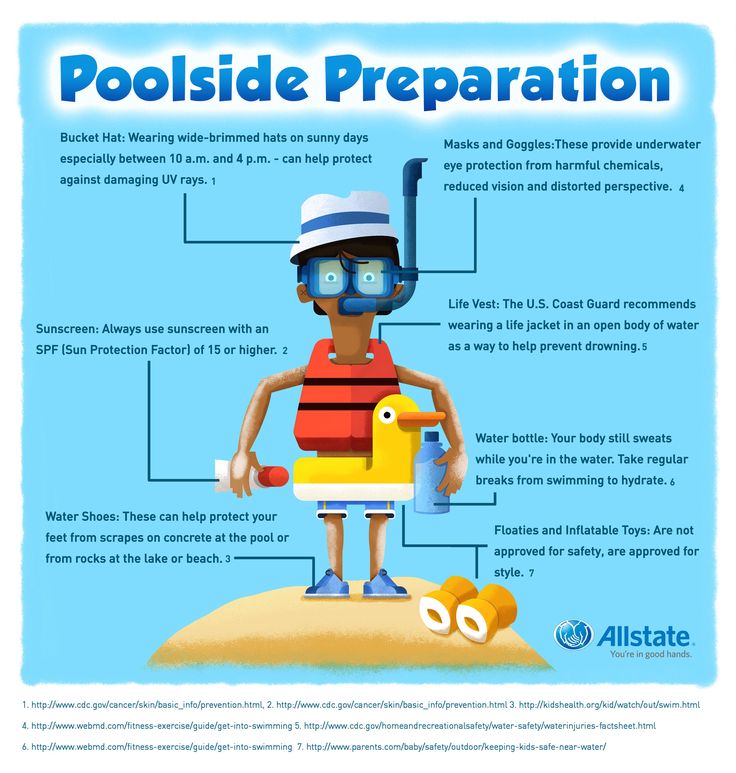
So the real question is: "How do dancers not look sweaty?" And what can we do to make our sweat as tolerable as possible.
In this article you will find the ways dancers can deal with sweat to make themselves more enjoyable dance partners.
The most important thing to be less sweaty on the dance floor is this though:
"You are doing sports, you will sweat. Just bring a towel!"
And if you want a stylish one, we've created the Dance Towels made from microfiber that look like elegant scarves, or handkerchiefs so you look great even when carrying a towel.
Enjoy the article and see you on the dancefloor!
1. Dealing with sweat in dancing is way different from other sports!
In most sports all you want is: Get rid of sweat as fast as possible. That's what most sports clothing and sports underwear is all about. And at first glance that sounds perfect for us dancers as well, but we couldn't go more wrong. Many of us dancers have tried different types of sports underwear.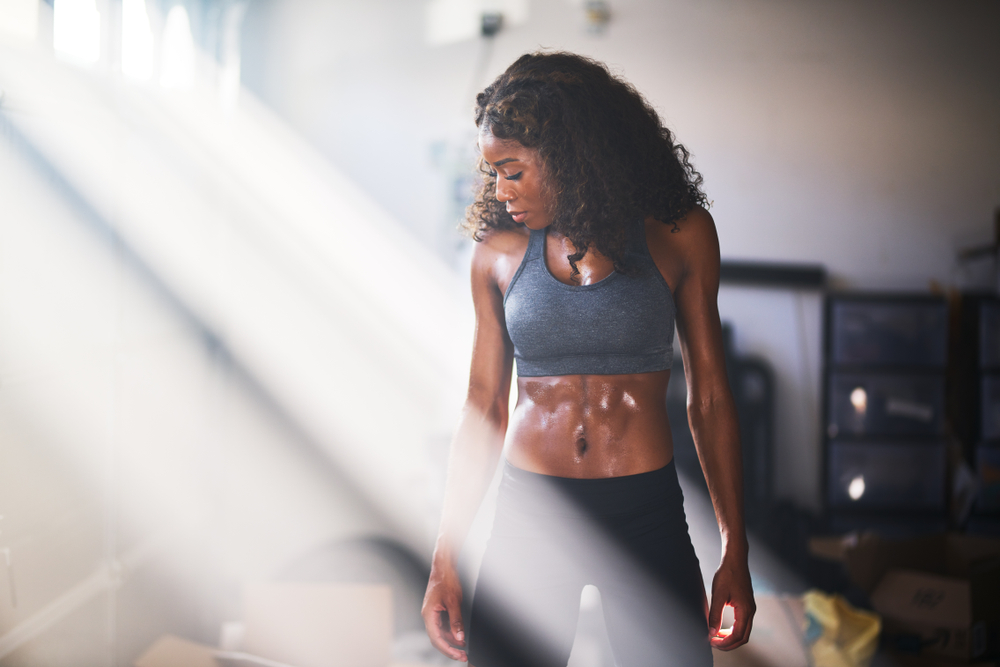 I myself have spent almost 1000€ on different types of special sports underwear but in all cases of sportswear you are confronted with one serious problem that only matters for dance sports and which makes it basically impossible for us to wear sports clothing.
I myself have spent almost 1000€ on different types of special sports underwear but in all cases of sportswear you are confronted with one serious problem that only matters for dance sports and which makes it basically impossible for us to wear sports clothing.
Sports clothing transports the sweat from your body to the outside. So if your underwear transports the sweat to the outside, your body will be dryer but your shirt will be wetter and you will look as if someone just spilled water over you ... the whole bottle ... maybe two.
The second problem is this: Your outside layer is exactly that part of the body where your dance partner is touching you. If your clothing transports the sweat to the outside you will be dryer, but your partner will be soaking wet and dancing with you will feel like dancing with Sponge Bob. Although many dancers have developed a high tolerance for sweat, I can tell from personal experience that most partners prefere to dance with me right after I changed and put on a fresh shirt.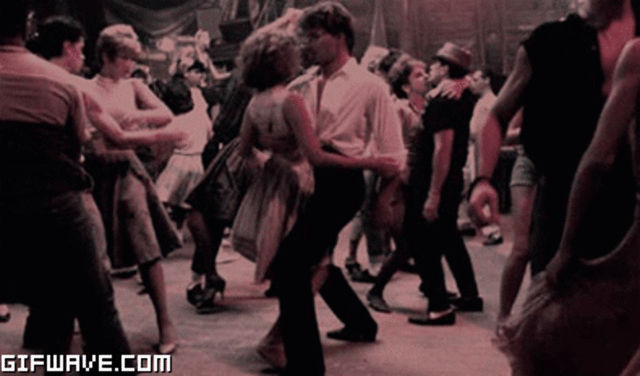
There is a 3rd reason to why you dont want to look sweaty. And it's also one that is rather specific to dancing. There is a common misconception that nontheless affects dancers in their dance partner search. People of the think the better you get at the dances, the more technically sound you are, the less effort dancing will take. Which means that the most experienced dancers will look less sweaty, just because they have a more efficient dancing technique. This is not true, but people often percieve it that way. So in fact, if you look really sweaty, you look like someone who dances exaggeratedly with a lot of unnecessary motion and many will deduct that it's probably better and healthyer to dance with someone else.
So: Clothing that will just transport the sweat to the "outside" is great for running and cycling, but it's not the best solution for dancers.
As dancers you want to keep the water in or dry it off and that's where the dancetowels help. You get rid of the sweat of your head before it soaks your shirt or the drops fly across the room.
2. Dress in layers.
Have you ever wondered, why so many professional dancers actually dance with their jackets on? If you look at Nils Andrén or Steven Sayer or Ryan Francois, you will almost always see them social dance with their jackets on. (It's a different story for videos and lessons, but for those they can put on a new shirt before each show.)
The reason is simple: You want to keep the sweat in, so it doesn't affect your partner. (You remember the Sponge Bob phenomena) You want your clothing to soak up the most sweat possible, without looking and feeling wet.
So these are the layers I use for festivals and dress up parties:
- Underwear T-shirt (no tanktop)
- Vintage dress shirt
- Vintage jacket or vest
Each layer is there to absorb as much sweat as possible, so you want there to be multiples of them, but not more than 3 or you will collapse under the heat.
For more casual events I use 2 layers:
- T-Shirt
- Dress shirt
I change both at least 3x per evening.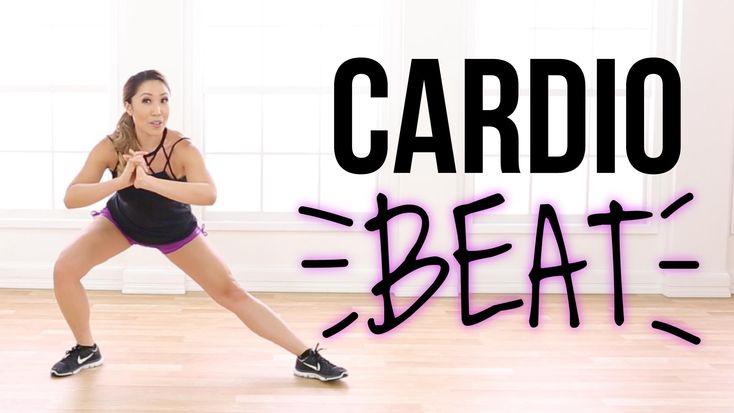 I know that's more than the average dancer changes, but my dance partners allways love me for that.
I know that's more than the average dancer changes, but my dance partners allways love me for that.
Pro-Tipp: Use skincolored underwear, not black or white. That will look the best if it is soaked. I know it looks weird when you first put it on, but the final result will be the best.
3. Choose the right fabric
Cotton or wool are allways the way to go for clothing. Most vintage clothing is made from those fabrics anyways, so vintage clothing is allways a great option.
Although our for our BJ Dance Towels we use a special combination of 80% Polyester 20% Polyethylen, clothing is a completely different animal.
We put a lot of effort into creating a microfiber towel that can be washed at 60°C so that's what makes it possible for us to have non-smelling-microfiber.
So for clothing: cotton and wool are the way to go, since they absorb the most sweat and smell the least.
4. Choose the right colors
For colors there are a few simple rules that can help you look less sweaty:
- Dark colors look less sweaty then bright or pastell colors when wet.
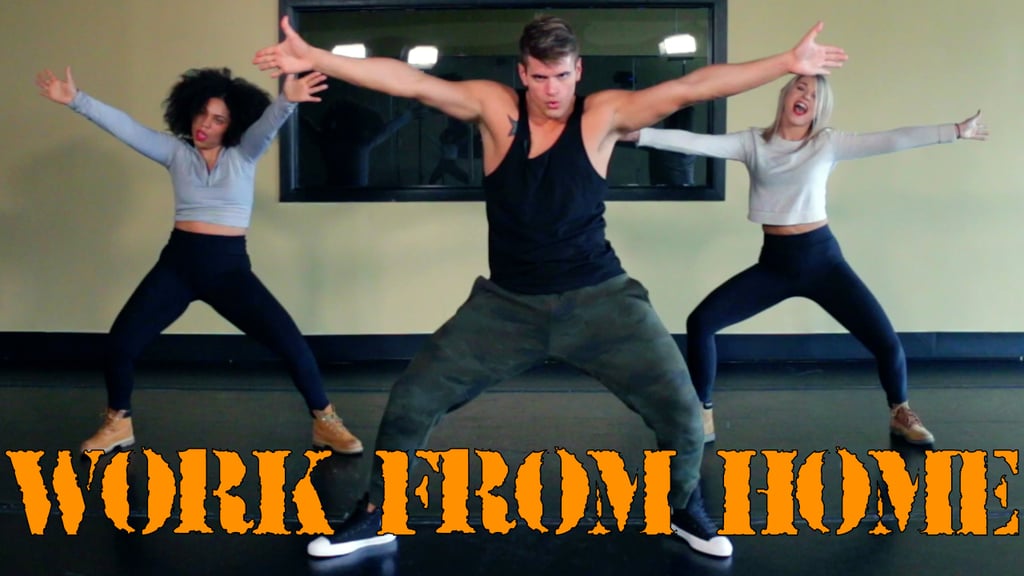
- White is allways great if (!) you wear a white (or better skin colored) undershirt, otherwise yout outer layer becomes seethrough.
- Texture and patterns in shirts help camoflage wet parts. (I know hawai shirts are not for everyone, but this is a true arguement in their favor.)
Here are some absolute no-goes: Light blue, yellow and bright red! Just stay away from those.
5. Care for what you eat and drink
As in every sport, dancers need to drink a lot to not collapse on the dancefloor. Drinking less is not an option for us. Trust me, it's not worth it, I've tried.
In fact you want to drink a lot, even if it makes you sweat more. The best recommendation is to drink something with juice in it, because when sweating and dancing you don't only loose water, you also loose electrolytes, salt and many other vital substances.
But there ways to influence the smell that comes with the sweat. Here are a few things that make you sweat more or smell more:
- Alcohol (increases sweat and smell).
 .. Sry bartenders...
.. Sry bartenders... - Meat (increases and changes smell)
- Garlic (increases smell)
- Chilly (increases sweat)
- Onions (increase smell)
- Asparagus (changes body odor completely)
I am not saying you need to stay away from all of these, Just maybe consider that "Döner with beer" before the dance might not make you the most sought after dancer of the evening.
UPDATE: I previously had thought salty snacks at the bar would be good for dealing with sweat, But after reading some science articles on it, it turns out that we all eat way more salt than is actually good for your health. So... Stay away from the incredibly tasty salty and spicy snacks at the bar... they will just make you feel dried out and hotter than you actually are.
Side note for dancers and organisers alike: Bars often don't love hosting dance events because they look great, but they still don't. Why is that?
Usually dancers drink "cheap stuff" and not a lot of it.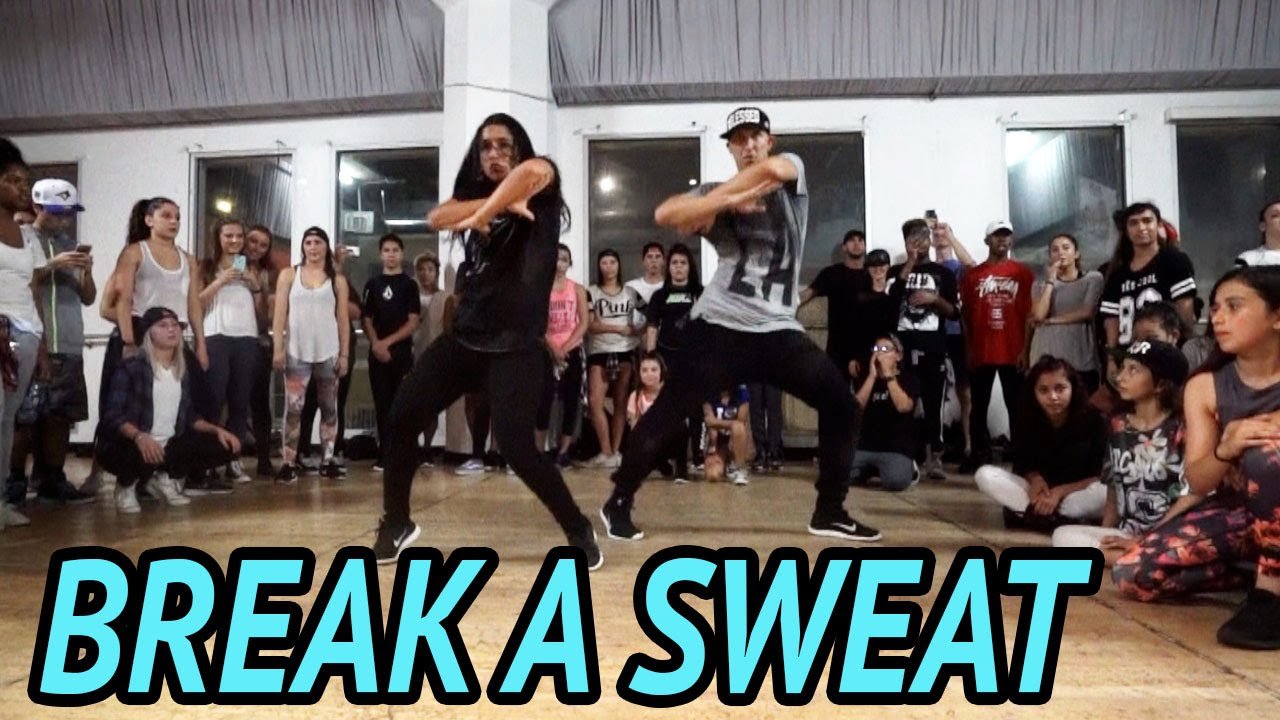 They drink water, an juice and sometimes alc free Beer. If you are a dancer, we recommend you to drink a lot, for your own sake and for the sake of the bar that needs to sell a lot of non alcoholic drinks to be able to profitably run a dance evening.
They drink water, an juice and sometimes alc free Beer. If you are a dancer, we recommend you to drink a lot, for your own sake and for the sake of the bar that needs to sell a lot of non alcoholic drinks to be able to profitably run a dance evening.
6. Dry your head
With the right clothing and the right food you can do a lot to reduce or camouflage sweat and make yourself more approachable at a dance event.
But even with all these things said, we sweat the most at our heads, which is especially unpleasent when doing dips or spins.
That's why you should allways have a towel with you that you use to dry your head with after a few dances. Your partners will loooove you for it.
Show me the Dancetowels!
Written by: Benedikt Jockenhöfer
Benedikt has been a dancer all his life. Growing up in Burkina Faso he started dancing early. After venturing through all kinds of dances he finally settled for swing dances like Lindy Hop and Shag, that he found his love for in Munich.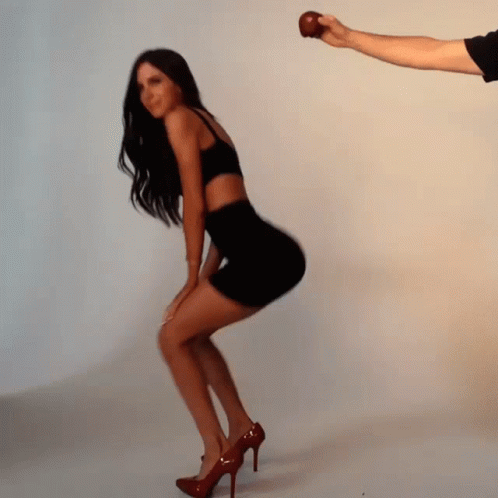
Sign up to the Dance Towels Newsletter
- Tipps, tricks and life hacks for dancers
- Get notified about new designs and restock
- Get involved into the Dance Towels design process
- Get exclusive behind the scenes insights
Click here to sign up
Rules of etiquette in social dances
Dance etiquette is inseparable from the etiquette of everyday life. At first glance, all this seems obvious, but we constantly encounter partners who think only about how stunning they look and what complex figures they can demonstrate.
As part of the dance community, we must be responsible for our words, actions and behavior, because this not only affects those with whom we directly communicate, but also affects the general atmosphere and energy in the hall. Therefore, there are recommendations that should be followed. nine0003
Of course, they are highly dependent on the social norms and culture of the country, but basically these rules are universal and will help you not be considered a rude person, wherever you are.
Personal care
No comment. Just before you hit the dance floor, take a shower, put on deodorant and put on clean clothes. Otherwise, you risk earning a reputation as a "skunk".
But you will still be sweating on the dance floor, so will help youemergency kit :
- A handkerchief or tissue paper to clean your face after dancing.
- Antibacterial Wet Wipes: If you continue to sweat, take action and wipe your underarms with wet wipes.
- Spare T-shirt or top, and this tip will work for both gentlemen and ladies: it's always nice to feel in a new look.
- Some take eau de toilette, deodorant, cosmetics with them.
All of the above applies to bad breath. It never hurts to brush your teeth once again and take chewing gum with you. Just don't chew while dancing - it's ugly and dangerous. Stay away from onions and garlic before a party because only time will kill the smell. nine0003
Clothing and footwear
When choosing what to wear to impress everyone with your appearance, you should remember that certain accessories can be dangerous for a partner and other couples. This includes, for example, long beads or hemlines. Don't dance with your bag: leave this deadly weapon with your friends or on the table.
This includes, for example, long beads or hemlines. Don't dance with your bag: leave this deadly weapon with your friends or on the table.
Ladies should pay attention to the choice of shoes : huge “hoof” shoes run the risk of falling off and hitting one of the dancers or may result in injury to yourself. Professional shoes for the Latin American program, which are fixed with a strap, are best suited. Flat shoes can also be used, but not everyone is comfortable moving flat. nine0003
Partners are required to wear the off-the-shoulder shirt or T-shirt . Believe me, it will be much more pleasant to hold on to you!
Dance invitation
It's not an exact science, just be polite and smile. Approach the person you want to invite with a smile and say, "Let's dance?" When he says yes, take him by the hand and lead him to the dance floor.
If you already know each other, you can be creative: try to make eye contact, wink and nod towards the dance floor. Ladies, don't leave dance invitations exclusively for men, at least make eye contact with them! nine0003
Ladies, don't leave dance invitations exclusively for men, at least make eye contact with them! nine0003
Try not to refuse even though life is full of exceptions. There are times when you don't want to dance with a person because they are unpleasant or uncomfortable. Either way, don't do it all the time. The reason is simple - it offends. But there are a few situations where you can say “No”: if you are not familiar with this style, if you are tired and want to rest, or if you are going to the toilet. You must explain with a smile the reason for the refusal to the invitee and promise him the next dance.
One of the main advantages of social dancing is the opportunity to practice with different partners. Therefore, you should not invite the same person all night. Give yourself and him a chance to dance with different people.
Don't create obstacles on the dance floor
There is nothing worse than an ill-mannered brute who decides to squeeze in where there is no room. This creates inconvenience and increases the risk of collisions. Do everyone a favor and take a break if there is nowhere for an apple to fall on the dance floor. Wait for the next song and secure your seat early. nine0003
This creates inconvenience and increases the risk of collisions. Do everyone a favor and take a break if there is nowhere for an apple to fall on the dance floor. Wait for the next song and secure your seat early. nine0003
Don't fight your way to the exit or the toilet by pushing other couples away and pushing each one: in this case, try to move along the edge and avoid the dancers.
Always apologize for a collision
Collisions in salsa are inevitable due to its active nature. The best thing to do is admit the mistake, apologize, and keep dancing. No need for long speeches, just a nod, the magic word "sorry" and a smile.
Do not train on the dance floor
Sometimes you can observe the following: suddenly the couple stops, and the more experienced partner begins to teach the beginner. Dancing is, first of all, joy and fun, and if they start to stop you, correct you and say that you are not good at dancing, no one will like it. However, if someone asks for help or advice, take it as a compliment, be friendly and help them.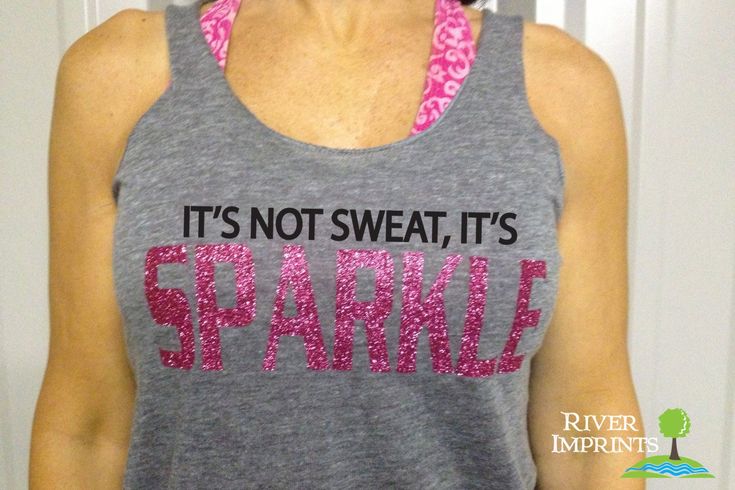 nine0003
nine0003
Smile
Strange, but for many it causes difficulties. Sometimes, especially at the beginning, we are too focused on the correct execution of movements and forget to smile. It seems insignificant, but you need to show your partner that you are enjoying the dance. In addition, a smiling person is more likely to be invited.
Keep your distance
Pair dancing is when two people move as one in close physical contact. But that's no reason to let go. When dancing with someone for the first time, it's best to be more conservative. Some gentlemen misinterpret intimacy in motion and try to snuggle up to each partner. If this is about you, then you better go to a dating site. Of course, flirting can add zest to the evening, but you should not overstep the bounds. After all, most people come to the salsateca just to dance. nine0003
Consider your partner's level
If you're dancing with a partner for the first time, it's best to start with the basics and then gradually increase in difficulty.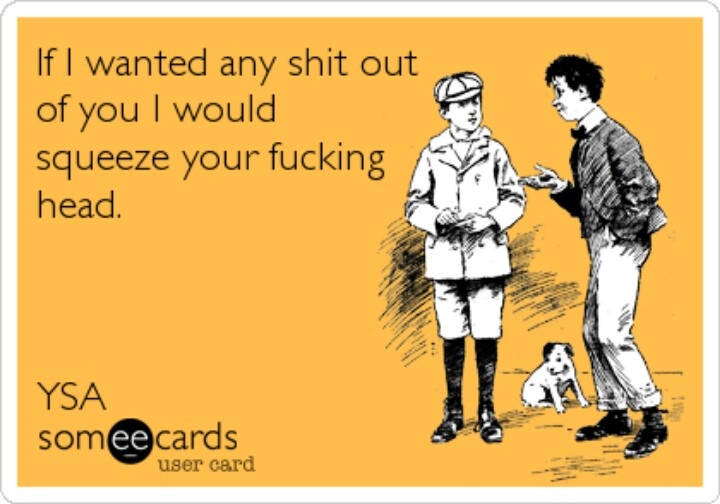 Otherwise, you risk not only hurting your self-esteem, but also physically injuring a person. If you're dancing with a less savvy partner, show that you enjoy dancing with a smile.
Otherwise, you risk not only hurting your self-esteem, but also physically injuring a person. If you're dancing with a less savvy partner, show that you enjoy dancing with a smile.
The magic word "thank you"
Be polite: when the music is over, smile and say "thank you". Then take your partner by the hand and take them off the dance floor. nine0003
Spicy Salsa School invites everyone to salsa, bachata, kizomba and solo classes. And we also hold incendiary parties in the center of Moscow !
Details on our website.
Sweat from sports and exercise
Causes of excessive sweating
Exercise and other physical activities increase our body temperature. To normalize body temperature, the body sweats. To think that sweat, evaporating from the surface of the skin, releases heat is wrong - it is not! On the contrary, evaporation is a process that requires energy, so heat is removed from the body, cooling the body. nine0003
nine0003
Some people sweat more than others when exercising and playing sports, while not everyone even has traces of sweat on their clothes. During very intense workouts, you can sweat ten times more than usual, while producing up to 10 liters of sweat per day. This is a large volume of fluid, so it's really important when exercising - drink plenty of water during training - to avoid dehydration.
Causes of Excessive Sweating
Contrary to popular belief, excessive sweating during exercise does not affect weight loss and does not provide any benefit - it does not increase the benefits of fitness. More sweat does not mean more calories are burned. It only means that the body sweats more to cool the body in order to avoid overheating. nine0003
How to reduce sweating during and after exercise?
Stay fresh and dry by showering after workouts. Dry your body thoroughly with a towel after showering to prevent the growth of bacteria that cause body odor.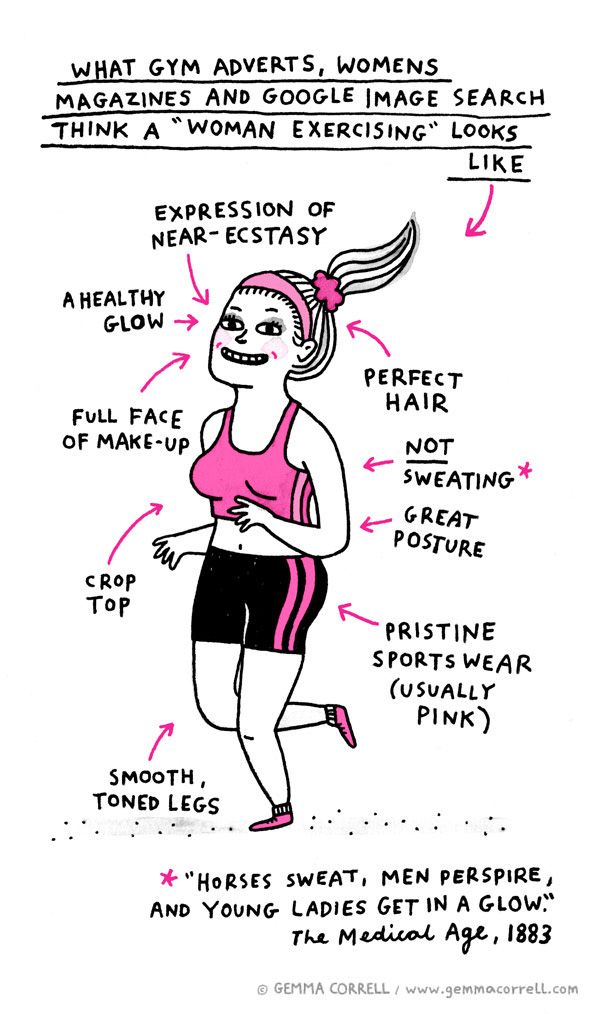
Try the first motionsense smart antiperspirants. Rexona Motionsense* Antiperspirants - our patented unique technology to eliminate the causes of excessive sweating - to effectively control excessive sweating, enhanced with specially designed freshness microcapsules. Micro-capsules of freshness open with every movement, keeping you feeling fresh from morning to evening. The friction of the body against the skin of the armpits causes the shells of the capsules to break down and release new charges of freshness. So the more you move, the more Rexona with Motionsense protects you from odor and sweat. nine0003
If you're worried about wet sweat marks on your clothes or think you're sweating a lot during or after your workout, try Rexona Clinical Protection for men or women. 3X more protection than base antiperspirant**. The unique Defense+ technology forms a microfilm on the surface of the skin, providing 96 hours of continuous protection against sweat and odor.
Clinical protection / Defense + (clinical protection / Defense +) - protection against excessive sweating.